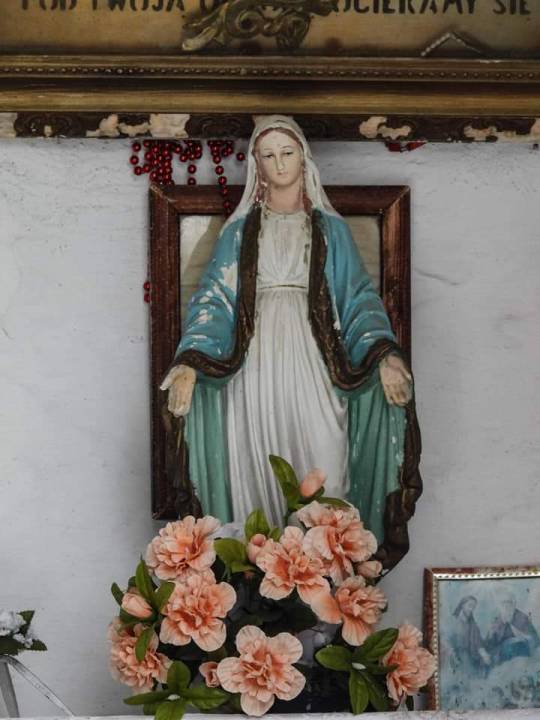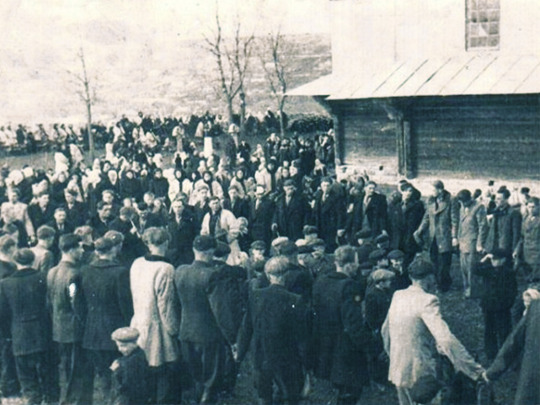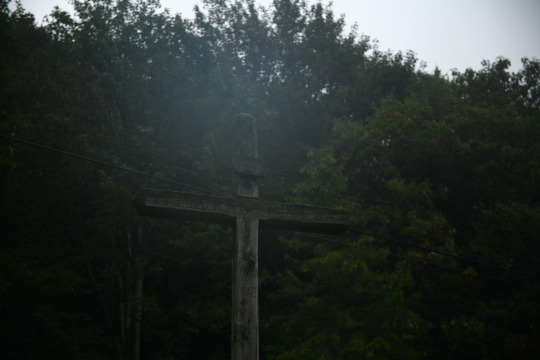#subcarpathian
Explore tagged Tumblr posts
Text

Bieszczady Mountains, 13.09.22
#poland#photography#polska#photographers on tumblr#canon#canon photography#nature#landscape#podkarpackie#podkarpacie#subcarpathian#clouds#mountains#bieszczady#moody#moody weather
180 notes
·
View notes
Text
Bonus Poll





The current flag of Yegoryevsk, Moscow Oblast, Russian Federation vs
The current flag of Heide, Schleswig-Holstein, Germany vs
The current flag of San Giorgio Bigarello, Lombardy, Italy vs
The current flag of Łańcut, Subcarpathian Voivodeship, Poland* vs
The current flag of Moscow, Central Federal District, Russian Federation
*or Mike
#cft bonus polls#flag: Yegoryevsk - Moscow Oblast - Russian Federation#flag: Heide - Schleswig-Holstein - Germany#flag: San Giorgio Bigarello - Lombardy - Italy#flag: Łańcut - Subcarpathian Voivodeship - Poland#flag: Moscow - Central Federal District - Russian Federation
9 notes
·
View notes
Text

Subcarpathian Rus ♡
I like Lain posters, so I got inspired
1 note
·
View note
Text




Small shrine in Wola Sekowa, Subcarpathian voivodeship, Poland.
351 notes
·
View notes
Text
Polish Miku!!! (but Subcarpathian)

137 notes
·
View notes
Photo

The carving up of Czechoslovakia, 1938-1939.
"Wielki atlas historyczny", ouvrage collectif, éd. Demart, Varsovie, 2023
"Nationalities in the Czechoslovak Republic", propaganda postcard of the Sudeten German Party, 1938, Karlovy Vary
by cartesdhistoire
In a public speech in February 1938, Hitler demanded the annexation of the Sudetenland, the German-speaking region of Czechoslovakia, to Germany. On Hitler's orders, the Sudeten German Party (SDP), whose objective was the region's annexation to the Reich, worked to create the political conditions for a German military attack against Czechoslovakia, which the German state had been preparing since April 1938 under the code name "Fall Grün."
Unrest persisted until September, convincing the British government that the coexistence of Czechs and Germans within a single state was no longer feasible. This reinforced the viewpoint of British Prime Minister Chamberlain, who believed it was essential to appease Hitler's demands. Following two meetings between Hitler and Chamberlain, the Munich Conference was convened on September 29, at the initiative of British and American diplomacy, without the presence of Czechoslovak representatives. After midnight on the 30th, the participants signed an agreement fully accepting the German position.
On March 14, 1939, under pressure from Hitler, Slovakia proclaimed its independence in Bratislava, and on the same day, Hungary demanded the transfer of Subcarpathian Ruthenia. On the morning of March 15, 1939, German troops crossed the Czechoslovak border. In occupied Czechoslovakia, the Germans seized the armaments of 45 infantry divisions, thousands of cannons, hundreds of tanks and planes, along with large quantities of other military equipment, medicines, and food. However, the most valuable spoils were the industrial and construction capabilities of the Czech lands, which aided Germany in achieving victory during the blitzkrieg of 1939–1940.
58 notes
·
View notes
Text

Easter dance in the Subcarpathian village of Chortovets.
Ukraine, 1920s.
#easter#ukraine#black and white#vintage#1920s#ukrainian culture#slavic culture#slavic#carpathians#ukrainian history#vintage photography#dance
63 notes
·
View notes
Text

Ladislav Rozman (Slovak, 1898 - 1986)
Subcarpathian Rus
1930 - 1940
80 notes
·
View notes
Text
Ranking the names of Polish voivodships
16. Wielkopolskie - I hate when people translate it to English as Greater Poland. I mean what's so great about it?
15. Lubuskie (Lubusz) - nie lubię to
14. Pomorskie - means by the sea which doesn't mean it's special because so is zachodniopomorskie although kujawsko-pomorskie isn't for some reason.
13. Zachodniopomorskie - by the sea but west, I appreciate it. I can barely spell it though and usually I just hope autocorrect does it's job.
12. Podkarpackie - means lower Carpathian, what is this Romania? However in English this is usually written and Subcarpathian which I find funny for reasons.
12. Opolskie (Opole)- we are already poles so I see no reason to have this called Opole.
11. Małopolskie - lesser Poland. I think it sounds cute but
9.Warmińsko-mazurskie - goes in the middle because I'm not sure what to say about it
8. Lubelskie (Lublin)- heh lube, also look we have off brand Dublin! Take that Ireland
7. Kujawsko-pomorskie - the best of the the Pomeranians
6. Śląskie (Silesian) - not sure what it means it's fun to say
5. Dolnośląskie - means lower Śląskie, which means it's all the fun of śląskie now but now it sounds like a delicious kebab or something.
4. Podlaskie- means near the forests which sounds rightfully ominous because you have already traveled too far if you end up in Podlasie for any reason.
3. Świętokrzyskie - means holy cross which okay but the best part is that nothing fucks with foreigners like having a place spelled Świętokrzyskie
2. Mazowieckie - apparently this means land of the mud smeared people, and I enjoy that it's right above the vovoideship called holy Cross. Like here we are the normal people in Świętokrzyskie and to the north there be mud people
1. Łódzkie (Łódź)- naming a landlocked region "boat" is honestly iconic.
10 notes
·
View notes
Text




Flag Wars Bonus Round
7 notes
·
View notes
Text


Hungarian Jews from the Subcarpathian Rus (present-day Ukraine) who have been selected for death, wait in a grove of trees between Crematoria 4 and 5 before being murdered in the gas chambers.
Auschwitz-Birkenau, May 1944.
From May 15 to July 9, 1944, 424,000 Hungarian Jews were deported to Auschwitz, where 80% would be gassed upon arrival.
These photos are part of the Auschwitz Album, the most comprehensive photographic evidence of the mass-murder process in Auschwitz-Birkenau. The album may be viewed in its entirety here.
#genocide tw#Holocaust tw#antisemitism tw#history#International Holocaust Remembrance Day#the baby holding the flower in the first photo…there are not words
4 notes
·
View notes
Text

Ghostly Cross, 12.09.2022 Cisna, Bieszczady Mountains
#poland#polska#photography#photographers on tumblr#canon#canon photography#trees#nature#cross#moody#moody weather#rainy#ghost#bieszczady mountains#bieszczady#podkarpackie#podkarpacie#subcarpathian#subcarpathia
56 notes
·
View notes
Text

✯ Round 2 ✯ Match 61 ✯
The current flag of Hong Kong, China

Propaganda:
None
vs.
The current flag of Łańcut, Subcarpathian Voivodeship, Poland

Propaganda:
None
Tournament Policies: ✯ Choose the flag that's more meaningful to you! ✯ Be respectful of place names and cultural symbols in your commentary! ✯ If you want to submit propaganda, you may do so at the submission form linked in the pinned post. It will only be included if it is submitted before the next post with that flag is drafted and will be included in all subsequent posts the flag is featured in.
#cft polls#polls#flag: Hong Kong - China#flag: Łańcut - Subcarpathian Voivodeship - Poland#eyestrain#eyestrain: color
12 notes
·
View notes
Photo



FOLK ART OF SUBCARPATHIAN RUS'
SOURCE: http://carpatho-rusyn.org/hutsul/
2 notes
·
View notes
Text
the reception is in lemko hall:
Lemko Republic, ... was a short-lived state founded on 5 December 1918 in the aftermath of World War I and the dissolution of the Austro-Hungarian Empire.[1] It was centered on Florynka, a village in the south-east of present-day Poland. Being Russophile, its intent was unification with a democratic Russia and was opposed to a union with the West Ukrainian People's Republic. A union with Russia proved impossible, so the Republic then attempted to join Subcarpathian Rus' as an autonomous province of Czechoslovakia. This, however, was opposed by the then governor of Subcarpathian Rus', Gregory Žatkovich.
4 notes
·
View notes
Text
To the east of the Lemkos, a further Ruthenian subgroup, the Hutsuls, decided to forgo the other available choices and declare their independence. A group of demobilised soldiers from the area attacked Hungarian gendarmes stationed in Rahó/Rakhiv district in January 1919. With this stockpile of weapons. they declared the Hutsul Republic, forming a forty-two-member council and four-man executive government. Rakhiv, though an otherwise sleepy town in the middle of nowhere, was the geographic centre of Europe according to the Viennese Geographic Society. Near the town centre, where a monument declaring Rakhiv's distinction as the ‘heart of Europe’, the new state began its operations. The council fielded an army of around 1000 men, and the soldiers were quickly called to arms against the encroachments of Romanian troops. For the next few months in 1919, the Hutsul state ruled over a territory with 20,000 inhabitants.
There is little indication that this new form of government dramatically affected the lives of its ‘citizens’, but it continued to be a thorn in the side of the larger neighbours. The Prešov group ultimately decided the fate of all Subcarpathian Ruthenians who joined Czechoslovakia in April 1919. The Romanian and Czechoslovak troops roaming the area came into direct conflict with the Hutsul army and ended its brief rule in June 1919. The area then was incorporated into the Czechoslovak state in September 1919.
Even beyond their official existence, these short-lived entities continued to pose a threat to Polish officials. The head of the Banica municipality (Grybów county), Wasyl Rydzanycz, continued to issue travel documents until at least mid-1921 without the authorisation to do so. Police accused a priest in a nearby village, Fr. Mykhal Fechytsa, of issuing dozens of passports so that people could move freely between Poland and Czechoslovakia. The new borders could not sever family or traditional ties that spread across the mountain ridge. Investigators also noted that Fr. Fechytsa was in possession of a municipal seal stamp, thus giving him the power to practically make any piece of paper an official document. In the chaotic years after the First World War, a simple ink blotting tool was extremely powerful.
6 notes
·
View notes